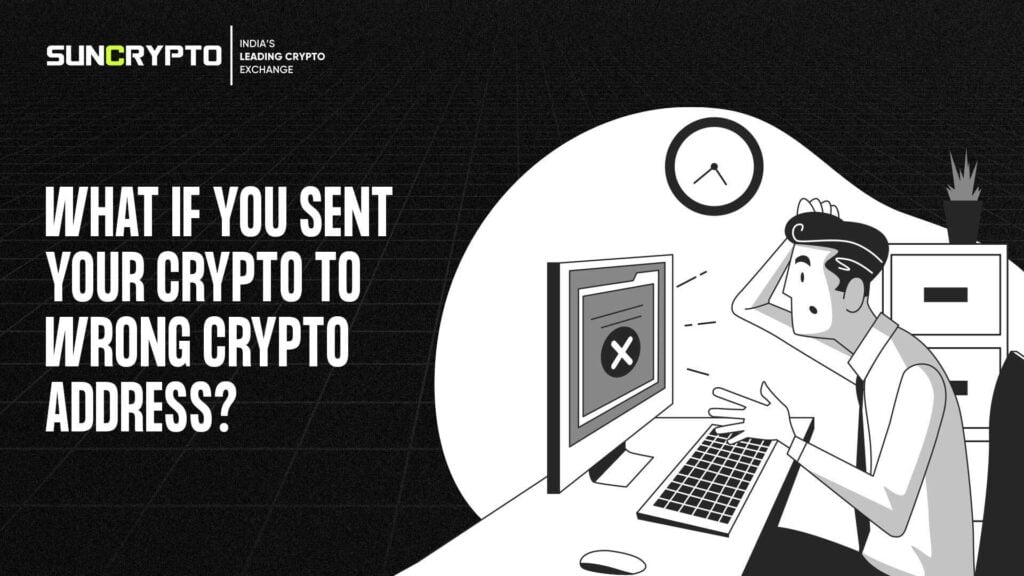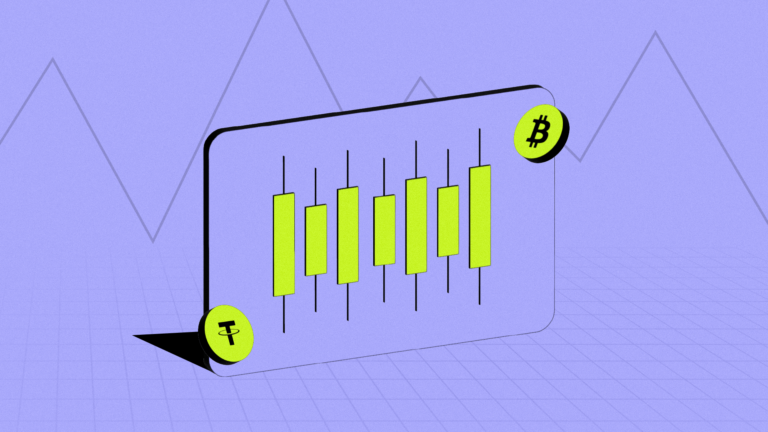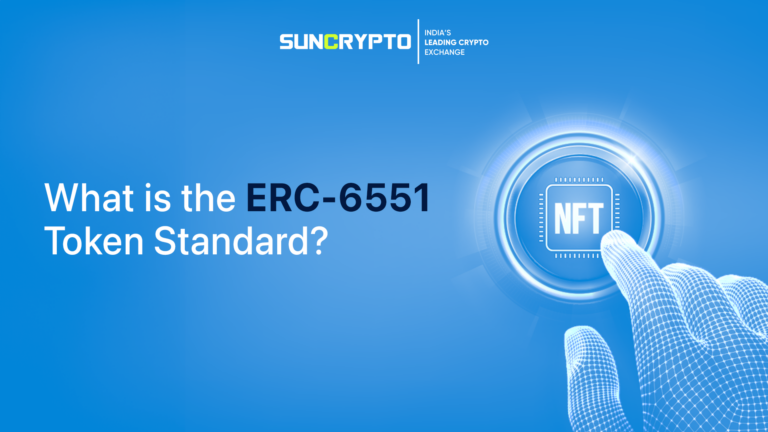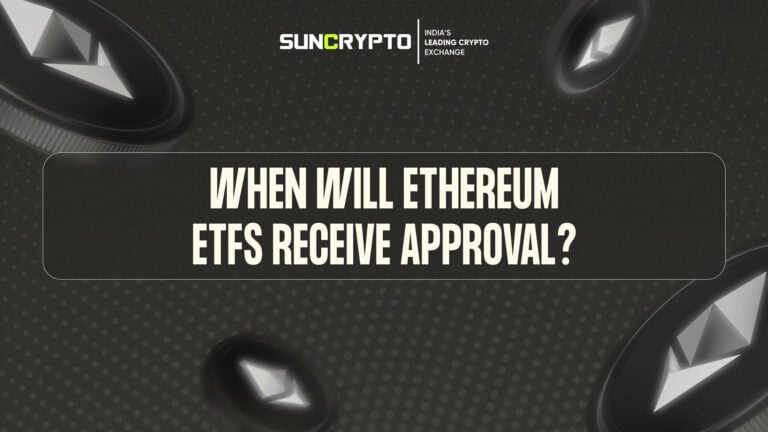The decentralized nature of blockchains empowers users with complete control over their assets, eliminating the need for a third-party or centralized entity. On the positive side, this ensures that any governing entity cannot halt or reject transactions. However, the flip side involves full accountability with minimal external support, primarily relying on community forums.
Moreover, the unique structure of cryptocurrency addresses and the lack of universality in cryptocurrencies increase the likelihood of encountering errors during transactions. For instance, crypto may be mistakenly sent to the wrong wallet address or even the wrong network, leading to challenges in recovering funds, if feasible.
The question then arises: are your assets irretrievably lost when sent to the incorrect wallet address?
Is Crypto Irretrievable When Sent to a Wrong Wallet Address?
In simple terms, yes, once your crypto is sent to the wrong address, it becomes inaccessible to you. You forfeit control of your assets, and the intended recipient does not receive the transferred crypto. There are three potential scenarios when crypto is sent to an incorrect address:

▪️ Burn Address or Dead Wallet: If the wallet address is a burn address or belongs to an inactive wallet (dead wallet) without private keys, the assets sent cannot be reclaimed. Attempts to contact the wallet owner are often futile, especially in the case of dead wallets, where access is dependent on the private key holder’s reactivation.
▪️ Nonexistent Wallet Address: Even if the entered address follows the blockchain’s wallet structure but has not been created (mined), the transfer is executed. Theoretically, anyone creating an account on the network with that address could access the funds. However, the likelihood of this is extremely low, considering the vast number of possible public address combinations.
▪️ Active Wallet: If the wallet is active, the recipient takes control of the funds. Recovery is possible only if the wallet owner can be identified and contacted. In the case of an exchange account, reaching out to the exchange may offer a chance at recovery.
What Occurs When Crypto is Mistakenly Sent to the Wrong Blockchain?
As previously explained, a transfer transaction can only proceed if the wallet address aligns with the specific blockchain’s wallet structure. If there is a mismatch, the transfer request is declined, preventing assets from being sent to unrelated blockchain networks.
For instance, it is impossible to erroneously transfer assets from Ethereum to Bitcoin, Tron, or Solana since their wallet structures are entirely different. However, mistakes can occur in networks with close resemblances, such as Ethereum and other EVM Layer 1 and Layer 2 networks like Fantom and Arbitrum, or non-EVM networks with similar address structures like Taraxa and Sui blockchain.
If an asset is sent to a non-EVM network with a comparable wallet structure (such as Taraxa and SUI), it may become unrecoverable. This is because the asset is not universally recognized on these networks, as the smart contract governing its creation and transactions does not exist on the destination network.
It’s important to note that this exception doesn’t apply to bridged assets, which can be successfully transferred to non-similar networks if the appropriate bridging mechanism is available and utilized correctly.
What can be Done in Case Cryptocurrency is Sent to an Incorrect Wallet Address?
Recovering mistakenly sent crypto assets is only feasible if they are sent to an active address. If the wallet is inactive, dead, a contract, or a burned wallet address, retrieval of the asset is not possible. However, if the address is active, recovery attempts can be made.

An active wallet could be either a personal or institutional wallet (such as one belonging to an exchange or another centralized institution). Here are the steps you can take in any of these scenarios:
▪️ Reach Out to Exchange Customer Support: Some centralized exchanges offer asset recovery services for incorrect transfers to their wallets. While the terms may vary, affected individuals might be able to recover some or all of the lost assets.
▪️ Contact the Wallet Address Owner: If the wallet owner is known, the affected person can communicate with them to discuss potential recovery. In the case of the asset being sent to a stranger, efforts can be made to identify the recipient through transaction analysis or by tracking transfers to centralized exchanges.
The possibility of recovery hinges on successfully identifying the recipient, with the final outcome dependent on the owner’s willingness to return the transferred crypto.
How to Prevent Mistakenly Sending Cryptocurrency to an Incorrect Address
In cryptocurrency transactions, the network validates the address structure before executing a transfer, making it susceptible to user errors. To minimize the risk of sending assets to the wrong address, consider the following precautions:
▪️ Copy and Paste Addresses: Cryptocurrency wallet addresses are typically lengthy combinations of alphanumeric characters. To ensure accurate entry of the recipient’s address, always use copy and paste. Typing addresses not only consumes time but also increases the likelihood of errors.
▪️ Scan QR Codes for Fund Transfers: Utilize the scan feature, which automatically copies the wallet address to the recipient address box upon scanning. However, it’s crucial to verify the correctness of the address and the intended amount before confirming the transaction.
▪️ Double Checking: Prior to initiating a transaction, confirm with the recipient that the provided address is correct. When dealing with exchanges, ensure the address aligns with the asset and network. Double-checking at each step is a fundamental precautionary measure—always perform a secondary review before proceeding.
▪️ Add the Address to Your Wallet Contact List: Some cryptocurrency wallets, such as MetaMask and Trust Wallet, offer an address book feature for saving frequently used addresses. Centralized exchanges may have similar functionalities.
Save commonly used addresses in your address list for convenient reuse, keeping in mind that specifying the recipient’s network may be necessary when using this feature across different networks.
▪️ Request the Recipient’s Domain Address: Services like Ethereum Name Service (ENS) and Unstoppable Domains convert lengthy cryptocurrency wallet addresses into human-readable domain names. To enhance accuracy and memorability, inquire about the domain address if available, especially when dealing with wallet naming services.
How to Retrieve Your Cryptocurrency if Transferred to the Correct Address but Wrong Network
For Ethereum investors, it is possible to utilize a single wallet for various EVM networks. In certain instances of erroneous transfers, users may mistakenly choose the wrong network when sending assets to the correct wallet address. In such scenarios, the assets are not lost but rather sent to the wallet via the incorrect network.
Recovering these assets is a straightforward process that involves switching to the intended network on your wallet. For users of Web3 wallets like MetaMask and Trust Wallet, adding the EVM network facilitates easy recovery. If your wallet lacks support for multiple network integration, an alternative approach involves exporting to a more versatile wallet using your private key or seed phrase.
Following the import, include the network to which your asset was erroneously sent, granting you access to your assets. For example, if you mistakenly sent ETH to Polygon instead of Ethereum, adding the Polygon network to your wallet and switching to it will allow you to retrieve your assets.
Conclusion
The decentralized nature of blockchain places the responsibility on non-custodial wallet users for their funds. Recovering wrongly sent assets is challenging due to lengthy addresses and the non-universal nature of cryptocurrencies across blockchain networks.
While recovery methods have been discussed, there are no solutions for assets sent to inactive wallets. Prevention, such as verifying transaction details, is crucial. When seeking recovery assistance, caution is advised to avoid scams. This article provides insights into potential recovery methods and is not financial advice.
To learn more about how to recover crypto sent to the wrong wallet address, go check out SunCrypto Academy.
Disclaimer: Crypto products and NFTs are unregulated and can be highly risky. There may be no regulatory recourse for any loss from such transactions. All content provided is for informational purposes only, and shall not be relied upon as financial/investment advice. Opinions shared, if any, are only shared for information and education purposes. Although the best efforts have been made to ensure all information is accurate and up to date, occasionally unintended errors or misprints may occur. We recommend you do your own research or consult an expert before making any investment decision. You may write to us at [email protected].






Hello,
I sent coin from my wallet to wrong wallet.
Can you help me on this?
Thanks
Hello Dear User,
We feel sympathy for your loss. If you had sent your crypto coin to the wrong wallet by any chance, you cannot recover the coin, as the wallet itself asks for the user’s permission prior before sending the coin to another wallet.
Secondly, you can contact the person directly for the recovery. Read More on https://academy.suncrypto.in/recover-crypto-sent-to-wrong-wallet-address/
Thank you, have a good day.